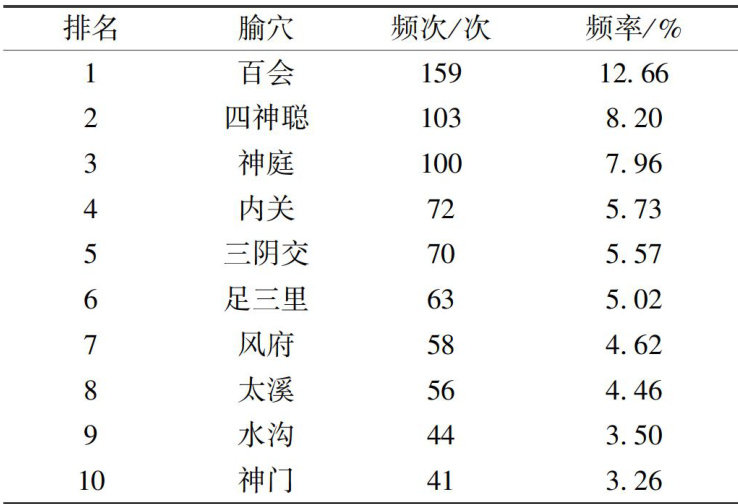针刺疗法干预脑卒中后认知功能障碍的选穴方案分析


打开文本图片集
[中图分类号]R246;R255.2[文献标志码]A[文章编号]1005-0310(2025)03-0059-09
Abstract:[Objective]To explore the acupoint selection patterns in acupuncture treatment for post-stroke cognitive impairment through data mining and analysis.[Methods]This study aims to conduct a systematic retrieval of clinical literaturesrelated to the acupuncture treatment of post-stroke cognitive impairment.A comprehensive prescription database is constructed using Microsoft Excel,and the frequencies of acupoints involved in the literatures are accurately counted and deeply analyzed. Correlation and clustering analyses are caried out onthe top2O core acupoints,and a network diagram of the core prescription is drawn to explore the rules of acupoint selection.[Results]A total of 181 acupoint prescriptions were screened, involving 93 different acupoints with a total usage frequency of 1 256 times.Among them,Baihui,Sishencong,Shenting,
Neiguan,and Sanyinjiao were the top five most frequently used acupoints. The Governor Vesel,Foot Shaoyang Gallbladder Meridian,and extra-meridian acupoints were commonly selected.The head,face,neck,and lower limbs were the primary body regions for acupoint application.Additionall,specific acupoints such as the Fiveshu acupoints,Yuan-source acupoints,and Luo-connecting acupoints were widely used.In terms of acupoint, Sishencong,Shenting,and Baihui were found to be strongly assciated.[Conclusion]Sishencong,Shenting, and Baihui are the core acupoints in acupuncture treatment for post-stroke cognitive impairment.
Keywords:post-stroke cognitive impairment;acupuncture;acupointselection;;correlation analysis;acupoint selection patterns ;data mining
0 引言
脑卒中是全球成年人的第二大死因,超过 60% 的病人治疗后有不同程度的神经功能损伤和认知障碍[1]。(剩余8407字)